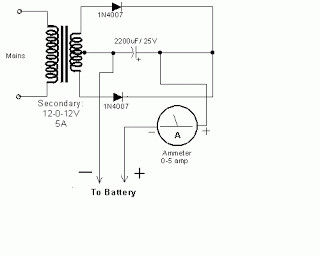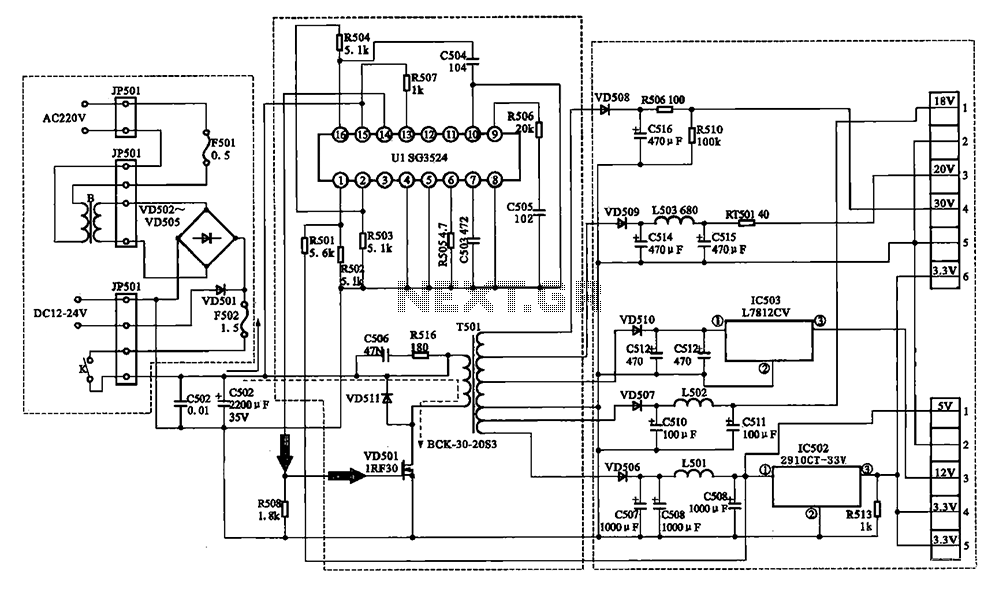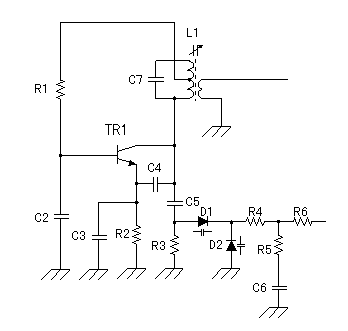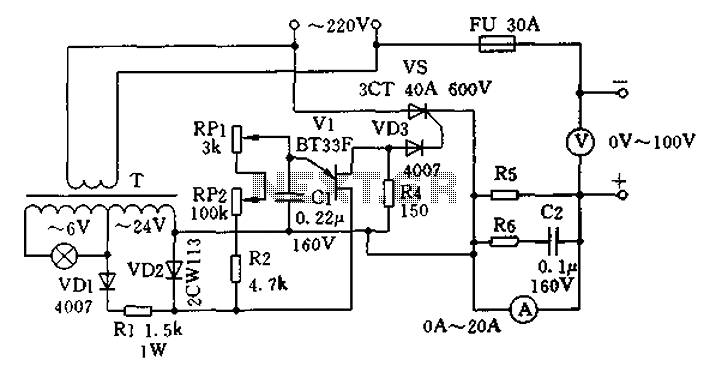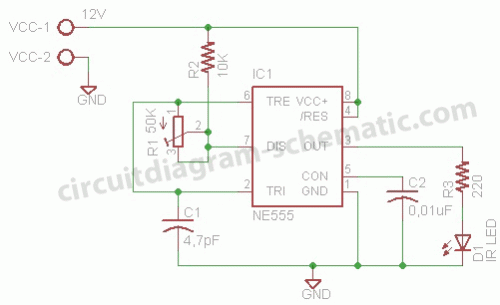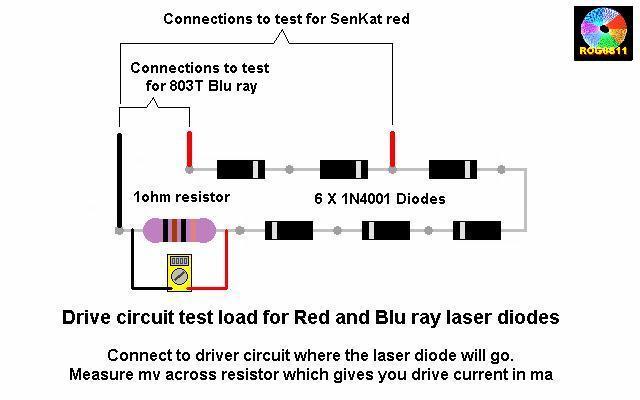
DC shunt regulator power supply circuit
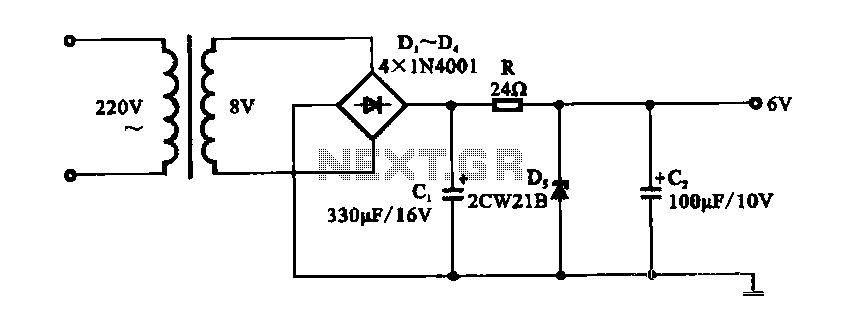
A DC shunt regulator power supply circuit is presented, which operates in parallel with a radio circuit. The circuit begins with an AC voltage of 22V, which is stepped down to 8V using a transformer. The 8V AC voltage is then converted to approximately 1V DC through a bridge rectifier. This DC voltage is filtered and regulated using components such as a center-tapped transformer (CT), resistors (R), and zener diodes (Ds), resulting in a stable output of 6V regulated DC. The circuit employs two electrolytic capacitors for smoothing the filtered output. Although this diode voltage regulated power supply circuit is simple, it has a significant drawback; when the load power is low, the zener diodes continue to draw current. Thus, if the load current decreases, the current flowing through the regulator increases, as the two currents must equal a constant sum. This makes the regulator suitable only for small load currents with minimal variations.
The DC shunt regulator power supply circuit is designed to provide a stable output voltage while being simple in construction. The initial stage involves a step-down transformer that reduces the high voltage AC input to a lower AC voltage level. The 8V AC output is then rectified using a bridge rectifier, which converts the AC voltage into a pulsating DC voltage. The resulting DC voltage is typically around 1V, which is insufficient for most applications, necessitating further regulation.
After rectification, the pulsating DC voltage is smoothed using two electrolytic capacitors. These capacitors serve to filter out the ripples in the DC voltage, thereby providing a more stable voltage to the subsequent regulation stage. The center-tapped transformer configuration allows for the use of zener diodes, which are critical in maintaining the output voltage at a constant 6V. The zener diodes operate in reverse breakdown mode, clamping the voltage to the desired level.
The use of resistors in conjunction with the zener diodes ensures that the voltage remains stable under varying load conditions. However, it is important to note that the current drawn by the zener diodes remains constant, even when the load is minimal. This characteristic leads to inefficiencies, especially in low-load scenarios, where the regulator may draw more current than necessary, potentially leading to overheating or reduced lifespan of the components.
In summary, while the DC shunt regulator power supply circuit is effective for providing a regulated DC output, its design limitations restrict its use to applications with low and stable load currents. Careful consideration of the load requirements and potential inefficiencies associated with the zener diodes is essential for optimal performance.DC shunt regulator power supply circuit Shown is a DC power supply circuit in parallel using the radio circuit, after the AC 22V output voltage by the step-down transformer 8V AC low voltage, 8V AC voltage through a bridge rectifier output of about 1V DC, filtered and then by ct, R, Ds regulator, C2 filtered output of 6V regulated DC. Circuit electrolytic capacitor using two smoothing filter. Use diode voltage regulated power supply circuit is simple, but the biggest drawback is that in case of load power zener diodes are still current consumption, the load current is smaller the current flowing through the regulator is greater, because this two shares equal to the sum of a constant current.
So the regulator power supply only for the load current is small, and the change is not the occasion.
The DC shunt regulator power supply circuit is designed to provide a stable output voltage while being simple in construction. The initial stage involves a step-down transformer that reduces the high voltage AC input to a lower AC voltage level. The 8V AC output is then rectified using a bridge rectifier, which converts the AC voltage into a pulsating DC voltage. The resulting DC voltage is typically around 1V, which is insufficient for most applications, necessitating further regulation.
After rectification, the pulsating DC voltage is smoothed using two electrolytic capacitors. These capacitors serve to filter out the ripples in the DC voltage, thereby providing a more stable voltage to the subsequent regulation stage. The center-tapped transformer configuration allows for the use of zener diodes, which are critical in maintaining the output voltage at a constant 6V. The zener diodes operate in reverse breakdown mode, clamping the voltage to the desired level.
The use of resistors in conjunction with the zener diodes ensures that the voltage remains stable under varying load conditions. However, it is important to note that the current drawn by the zener diodes remains constant, even when the load is minimal. This characteristic leads to inefficiencies, especially in low-load scenarios, where the regulator may draw more current than necessary, potentially leading to overheating or reduced lifespan of the components.
In summary, while the DC shunt regulator power supply circuit is effective for providing a regulated DC output, its design limitations restrict its use to applications with low and stable load currents. Careful consideration of the load requirements and potential inefficiencies associated with the zener diodes is essential for optimal performance.DC shunt regulator power supply circuit Shown is a DC power supply circuit in parallel using the radio circuit, after the AC 22V output voltage by the step-down transformer 8V AC low voltage, 8V AC voltage through a bridge rectifier output of about 1V DC, filtered and then by ct, R, Ds regulator, C2 filtered output of 6V regulated DC. Circuit electrolytic capacitor using two smoothing filter. Use diode voltage regulated power supply circuit is simple, but the biggest drawback is that in case of load power zener diodes are still current consumption, the load current is smaller the current flowing through the regulator is greater, because this two shares equal to the sum of a constant current.
So the regulator power supply only for the load current is small, and the change is not the occasion.
